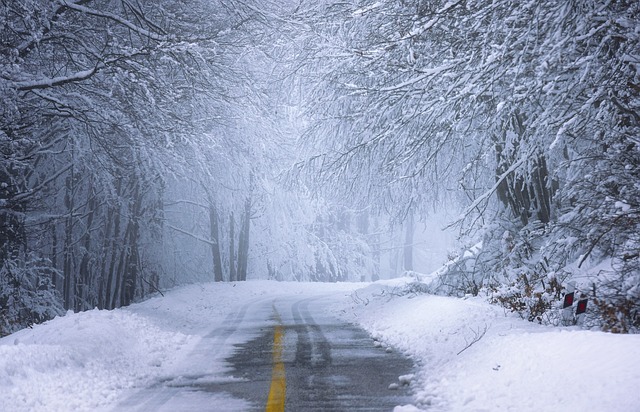Driving on dual carriageways and motorways is a whole new ballgame compared to town & city streets. Things move faster, there are more lanes, and the stakes feel higher. But don’t sweat it! With a little know-how and some confidence, you’ll be handling these roads like a pro.
First off, understanding the difference between dual carriageways and motorways is key. On dual carriageways, you might encounter exits and merges and even pedestrians, while motorways are more controlled environments with strict entry and exit rules. Knowing this helps in predicting what kind of traffic situations you might face.
Lane discipline is a big deal here. Stick to the left lane unless you’re overtaking. Constantly shifting lanes isn’t just annoying; it’s dangerous. Pay attention to road signs too. They provide crucial information about speed limits, upcoming exits, and potential hazards. Those overhead gantries on motorways? Goldmines of info!
Overtaking might feel like a high-pressure situation, but it doesn’t have to be. Check your mirrors, signal your intention, and move smoothly into the next lane. Don’t linger in the middle or outside lanes. Once you’ve overtaken, return to the left lane when it’s safe.
Slip roads, those ramps leading onto and off the motorway, are another area where smooth moves are essential. Match the speed of the traffic and merge carefully. If you’re leaving the motorway, signal early and give yourself plenty of time to decelerate on the slip road to avoid catching anyone off guard.
Long drives on these roads can be draining. Fatigue is a real risk, so plan for regular breaks. A quick rest stop, some fresh air, and even a coffee can make all the difference. Don’t push yourself to keep driving if you’re feeling tired. Safety first always! With these tips, you’ll not only survive but thrive on dual carriageways and motorways.
Confidently Handling Night Driving
Night driving presents its own set of challenges, but with the right strategies, you can cruise through the dark safely. Reduced visibility is the biggest obstacle. Street lights help, but there are stretches where you rely entirely on your headlights. Keep them in good working order, and always use dipped beams when other vehicles are around, switching to full beams on rural roads with no oncoming traffic.
Adjusting your driving speed to suit night conditions is crucial. Everything looks different in the dark – distances can be deceiving and familiar roads can seem unfamiliar. Slowing down gives you more time to react to unexpected situations. Keep an eye out for pedestrians, cyclists, and animals, as they’re harder to spot after dusk.
Fatigue tends to kick in harder at night. If you’re feeling drowsy, pull over safely at services and take a break. Splashing your face with cold water, grabbing a caffeinated drink, or even a quick nap can revitalize you. Don’t try to push through it – your reaction times slow down significantly when you’re tired.
Glare from oncoming headlights can be blinding. To counter this, adjust your rearview mirror to its night setting if it has one. Also, look toward the left side of the road to avoid being blinded momentarily. Keep your windscreen clean to reduce the scattering of light, which can worsen glare.
Use your car’s features designed for night driving. Switch to night mode on your dashboard to reduce strain on your eyes. Regularly clean your headlights to ensure they’re giving you the best possible illumination. A dirty headlight doesn’t just make it harder for you to see; it also makes your car less visible to others.
Staying alert is half the battle won. Engaging in activities like listening to music or chatting with a passenger can keep your mind active. But make sure not to get too caught up in either. Your focus should primarily be on driving.
Driving in All Weather Conditions
Driving in various weather conditions requires some serious adaptability. Each type of weather brings its own set of challenges for drivers. Whether it’s rain, fog, snow, or ice, adjusting your driving techniques is essential to stay safe.
Rain is probably the most common weather challenge. Wet roads reduce tire grip, making braking distances longer. It’s smart to slow down and maintain a greater distance from the vehicle in front of you. Ensure your wipers are in top shape and your windshield washer fluid is topped up.
Fog can be disorienting. When visibility drops, switch on your fog lights and keep your low beams on. High beams can reflect off the fog, making it harder to see. Follow the lines on the road to stay on track and keep a safe distance from vehicles around you.
Snow and ice make roads slippery, reducing control. If you don’t already, consider using winter tires; they offer better grip. Drive gently to avoid sudden movements, give yourself plenty of space for braking, and be cautious around corners. If your car starts to skid, steer into the skid to regain control.
Preparation is key for all weather conditions. Before setting off, clear your vehicle of snow, ice, and dirt. Check that your tires are properly inflated and have enough tread depth. Keeping a weather-specific emergency kit – think items like blankets, a flashlight, and a shovel – can be lifesaving in severe conditions.
Extreme weather can happen unexpectedly, so having a plan is essential. Know alternative routes, keep your phone charged, and inform someone of your travel plans. In severe weather, the safest option is often to delay your journey until conditions improve.
Safety always comes first when driving in challenging weather. By being prepared and adjusting your driving style, you ensure a safer journey for yourself and others on the road.
Navigating Out of Town & Rural Roads
Out of town and rural roads offer a different driving experience altogether. These roads can be narrower, winding, and full of unexpected surprises, making them both exciting and challenging.
Driving on rural roads often means less traffic, but that doesn’t mean fewer hazards. Sharp bends, hidden dips, and uneven surfaces can catch you off guard. Slow down and keep an eye out for road signs that warn of these features.
Speed adjustments are necessary for rural roads. The speed limits might suggest one thing, but the actual conditions could require you to drive much slower. Be cautious, especially in unfamiliar areas.
Animals and slow-moving vehicles like tractors are common on rural roads. Always be prepared to slow down or stop. Livestock might suddenly wander onto the road, so maintain a speed that allows you to react quickly.
Visibility can be an issue in the countryside. Hedgerows and overhanging trees can block your view of the road ahead. Use the process of ‘peeping and creeping’ at blind spots: edge forward slowly to get a better line of sight without committing fully until it’s safe.
Night driving on rural roads brings an extra layer of difficulty. With fewer streetlights, your headlights and fog lights become your best friends. Use them wisely and remember to switch to low beams if another vehicle approaches.
Rural roads might also have cyclists and pedestrians. Be patient and give them plenty of space. Respect their right to the road and pass them safely when it’s clear to do so.
The Pass Plus scheme can further enhance your driving skills. It covers all these scenarios – dual carriageways, motorways, night driving, all-weather driving, and rural roads. Completing the Pass Plus course not only boosts your confidence but can also lower your insurance premiums.
Mastering these diverse driving conditions prepares you for almost anything the road throws at you. With experience and practice, you’ll become an adaptable and confident driver, ready for any driving environment.




